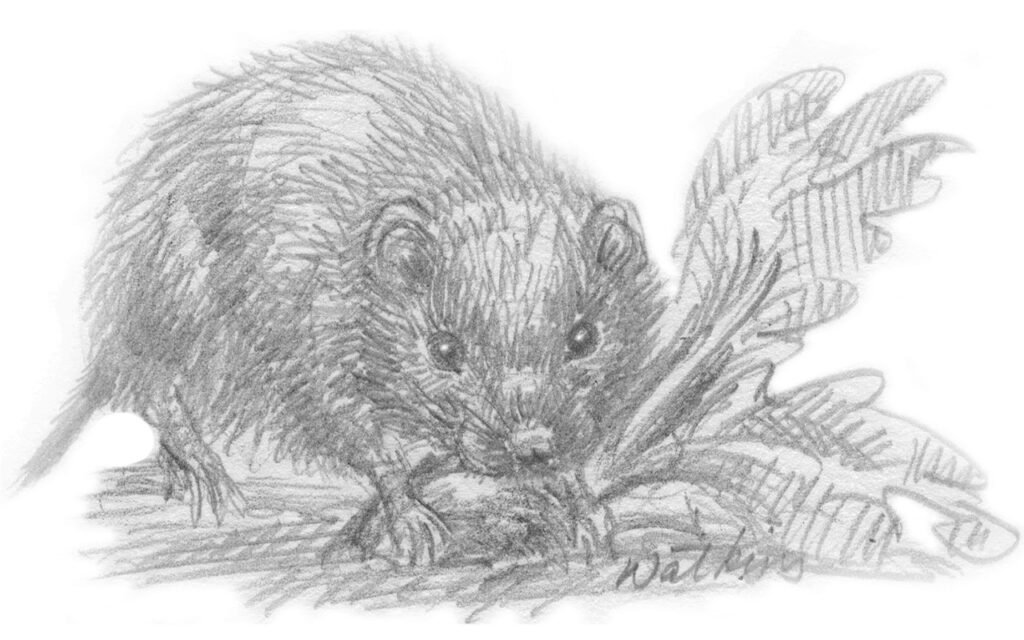July, Gardner’s Bane
Through the Garden Gate
Text and Illustration By Leslie Watkins

The meadow vole, Microtus pennsylvanicus, is a relentless, destructive, ubiquitous pest in gardens, both ornamental and vegetable. Often mistaken for moles who can be beneficial eating grubs, worms and other root eaters, the vole is smaller and vegetarian. If you notice one of your plants looking wilted and when you tug on it, discover it is missing roots, you probably have a vole. More likely a family of voles. Or an entire community.
Voles are small rodents four to six inches in length and resemble mice, but stockier with short tails. You may notice them scuttling around your garden from the corner of your eye or hear them squeaking from piles of brush or debris.
They burrow under the ground and under snow, and are active throughout the year, day and night. They reproduce almost all year long and can produce 12 litters or more. Gestation is only three weeks and litters contain three to10 pups. They are thought to have the highest reproduction rate of any mammal in the world. With this exponential growth, one mating pair can produce more than 100 offspring per year. Why so many? Because they are prey for just about every carnivore out there. Hawks, owls, coyotes, bobcats, weasels, snakes, raccoons, foxes, martens and cats.
Voles are herbivores. They eat grass, clover, tubers, bulbs, roots, shoots, bark, vegetables, perennials, annuals, bi-annuals, flowers, stems, buds, nuts, fruit – did I miss anything? They won’t.
I once took pity on a mother vole when I discovered her nest with babies. I put them in a cage and feed them and watched as they rapidly grew. Was she grateful? No, she was as mean as could be and tried to bite me whenever possible. I drove them to a field and let them go. Now I take no prisoners.
To prevent voles from ruining all your gardens and lawn, cut back brush, mow and weed. They are reliant on cover for protection from predators. Avoid thick mulch and woodpiles. Better to address your vole problem sooner than later.
The best way to catch them is with old fashioned wooden mouse traps set with bait, I use peanut butter. Take a gallon sized plastic plant pot and cut a mouse shaped hole on the edge. Place the pot upside down over the trap where you’ve noticed plant damage. Put a stone or brick on top of the pot. By doing this you will hopefully keep birds and chipmunks away from the trap. Check the traps daily or even twice a day and re-bait and set as needed. Good luck!
